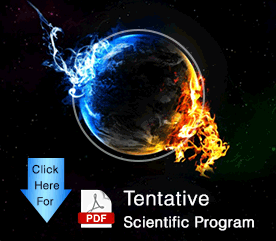
William P Sokeland
University of Florida, USA
Title: Supernova explosion’s space weather: Correlated mega fauna extinctions and biosphere mega-disturbances global warming & WZ Sagittae, SN 1054 and SN 1006 space weather
Biography
Biography: William P Sokeland
Abstract
Introduction: Correlation of megafauna extinctions and mega-biosphere disturbances with past supernova explosions has been accomplished by considering a time correction for supernova debris traveling at 87.54% of light speed. Supernova W44 is responsible for the Piora Oscillation which appears to be the biblical event of Noah's Flood. The closest supernova explosion, Vela Jr at 652 light-years, gives the greatest historical human disaster, The Black Death. When supernova debris energy input occurs in northern or southern hemisphere it causes heating (Global Warming) in the northern or southern hemisphere, respectively. Long term cooling occurs in the northern hemisphere when the incoming debris impacts only the southern hemisphere for hundreds of years, Little Ice Age. Escape from last ice age results due to melting of numerous supernova impacts showing time of impact by changing sea level. Statement of the Problem: The earth’s atmosphere is experience changes that are causing deaths due to pollution from debris streams from exploding stars, nova and supernova. The debris streams also cause global warming. Methodology & Theoretical Orientation: By knowing the distance to the remnant of the nova and supernova, the time the explosion occurred and the velocity of the debris stream, an approximate year of arrival at planet earth can be calculated. By searching the internet, biosphere disturbances are found at approximately the same time of the arrival of the debris streams. Findings: Numerous biosphere disturbances have been correlated with the arrival time of nova and supernova explosions over past centuries. These include megafauna extinctions, the Piora Oscillation or Noah’s Flood, the Black Death, northern and southern hemisphere global warming and the end of an ice age due to melting by numerous supernova impacts being correlated with the timing of changing sea levels. Conclusion & Significance: The current trend for global warming specialist to blame fossil fuels and CO2 for the increase of planetary temperatures may be incorrect and the true source of our current global warming is due to debris impact streams
from nova WZ Sagittae, SN 1054 and SN 1006. The incentive to inhibit the fossil fuel industry could be changed to design a mechanism or system to stop the incoming particle stream for exploding stars to protect living organisms on our planet.

